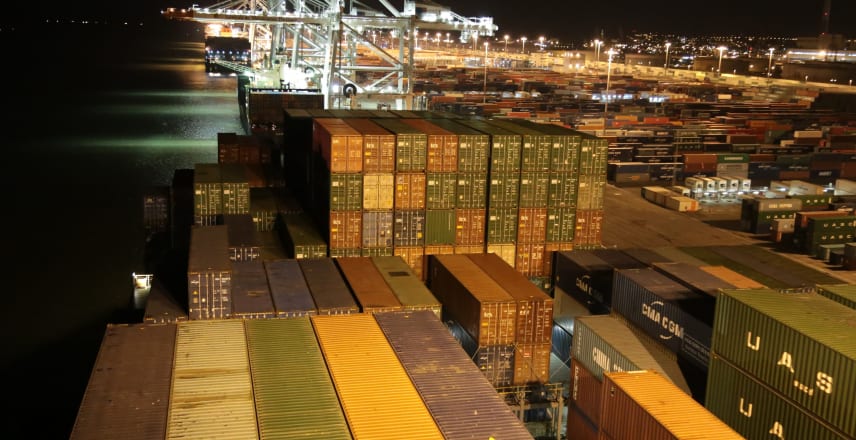Archive of posts with category 'kubernetes' and lang 'en'
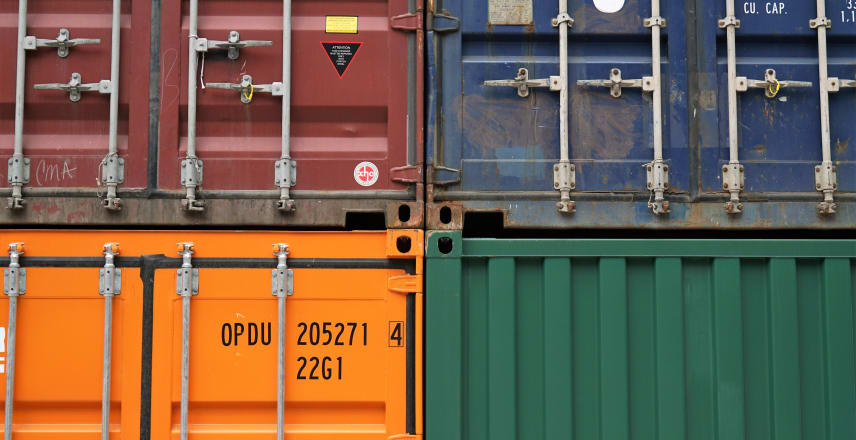
Convert Docker Compose to Kubernetes
[[2023-12-04-can-you-run-gui-applications-in-a-linux-docker-container Docker]] [[2023-11-17-what-is-docker-compose Compose]] and [[2020-04-03-how-to-set-up-the-codeserver-cloud-ide-platform-on-digitalocean-kubernetes Kubernetes]] are two of the most popular [[2023-10-29-docker-run-stopped-container container]] orchestration tools available today. [[2023-05-10-building-microservices-with-docker-creating-a-product-service Docker]] [[2023-08-30-docker-compose-vs-dockerfile Compose]] is a tool for defining and [[2023-05-12-running-mysql-server-in-docker-container-and-connecting-to-it-from-host-machine running]] [[2021-12-10-kubernetes-helm-how-to-show-multi-line-properties multi]]-[[2023-04-04-should-a-docker-container-run-as-root-or-user container]] [[2023-05-08-restart-docker-daemon-a-comprehensive-guide Docker]] applications, while [[2023-11-01-helm-charts-the-package-manager-for-kubernetes Kubernetes]] is an open-source system for automating [[2023-12-18-understanding-helm-chart-structure-for-easier-deployment deployment]], scaling, and [[2023-12-15-release-management-with-tiller-in-helm-version-2 management]] of containerized applications.

Understanding Helm Chart Structure for Easier Deployment
In a world where different communities [[2023-08-16-argo-cd-cluster-disaster-recovery cluster]] environments using one command, the [[2023-11-19-continuous-deployment-with-argocd deployment]] process can be much easier with the [[2023-10-25-using-helm-practical-use-cases use]] of [[2023-11-01-helm-charts-the-package-manager-for-kubernetes Helm charts]]. [[2023-12-15-release-management-with-tiller-in-helm-version-2 Helm]] is a package manager and templating engine for [[2023-12-22-convert-docker-compose-to-kubernetes Kubernetes]], which allows for easier deployment and management of [[2023-12-04-can-you-run-gui-applications-in-a-linux-docker-container applications]]. In this blog post, we will take a closer look at the structure of a [[2021-12-10-kubernetes-helm-how-to-show-multi-line-properties Helm]] chart to gain a better [[2023-05-14-understanding-kubernetes-the-container-orchestrator understanding]] of how it works.

Using Argo CD to Deploy Applications to Kubernetes
Are you looking for an effective way to deploy your Kubernetes applications? Then you should consider using Argo CD, a powerful and easy-to-use tool that helps you deploy your applications in a fast, reliable, and efficient way. In this article, we’ll show you how to use Argo CD to deploy your applications to Kubernetes and get your applications up and running in no time.

Release Management with Tiller in Helm Version 2
[[2023-12-18-understanding-helm-chart-structure-for-easier-deployment Helm]], the popular [[2023-12-22-convert-docker-compose-to-kubernetes Kubernetes]] [[2023-11-01-helm-charts-the-package-manager-for-kubernetes package]] manager, comes in two versions: version 2 and version 3. While version 3 introduced several changes and improvements over version 2, it’s important to understand the differences between the two versions.
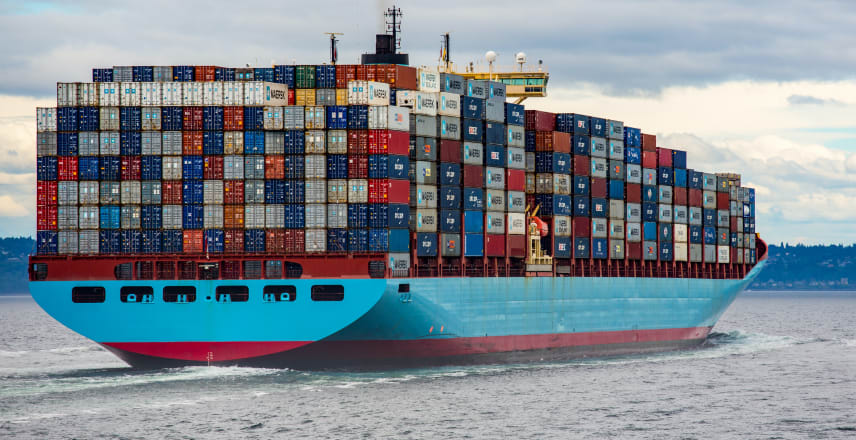
Can You Run GUI Applications in a Linux Docker Container
In the realm of software development, [[2023-04-04-should-a-docker-container-run-as-root-or-user Docker]] containers have gained immense popularity due to their ability to encapsulate applications and their dependencies, ensuring consistent and portable [[2023-12-18-understanding-helm-chart-structure-for-easier-deployment deployment]]. While [[2022-05-08-can-docker-connect-to-database Docker]] containers are primarily associated with command-[[2021-12-10-kubernetes-helm-how-to-show-multi-line-properties line]] applications and [[2023-05-12-running-mysql-server-in-docker-container-and-connecting-to-it-from-host-machine server]]-side processes, the question arises: can you [[2021-12-29-how-to-run-minikube-in-a-virtual-machine-ubuntu-vm_vt-x-amd-v run]] graphical user interface (GUI) applications within a Linux [[2022-07-28-how-to-copy-files-from-host-to-docker-container Docker]] [[2022-06-15-how-do-i-connect-a-docker-bridged-container-to-the-outside-of-the-host container]]? In this article, we delve into the intricacies of running GUI applications in [[2021-12-14-how-to-use-local-docker-images-with-minikube Docker]] containers, exploring the challenges, solutions, and [[2023-10-25-using-helm-practical-use-cases practical]] implementations.

Monit-Docker Container: A Comprehensive Guide
In the world of DevOps, it is essential to have a reliable monitoring system in place to ensure that [[2023-12-04-can-you-run-gui-applications-in-a-linux-docker-container applications]] and services are [[2023-05-12-running-mysql-server-in-docker-container-and-connecting-to-it-from-host-machine running]] smoothly. Monit-[[2023-04-04-should-a-docker-container-run-as-root-or-user Docker]] [[2022-07-28-how-to-copy-files-from-host-to-docker-container container]] is a powerful tool that can help you monitor and manage your [[2022-05-08-can-docker-connect-to-database Docker]] containers. This [[2023-05-08-restart-docker-daemon-a-comprehensive-guide guide]] will provide an overview of Monit-[[2022-06-15-how-do-i-connect-a-docker-bridged-container-to-the-outside-of-the-host Docker]] [[2023-10-29-docker-run-stopped-container container]], its [[2023-10-23-argocd-as-a-kubernetes-extension-advantages-and-benefits benefits]], and how to set it up. We will also discuss some best practices for using Monit-[[2021-12-14-how-to-use-local-docker-images-with-minikube Docker]] [[2023-05-14-understanding-kubernetes-the-container-orchestrator container]] and some alternatives.

Continuous Deployment with ArgoCD
As discussed in the previous section, setting up a continuous [[2023-12-18-understanding-helm-chart-structure-for-easier-deployment deployment]] workflow with [[2020-08-12-installing-kubernetes-with-minikube Kubernetes]] can be challenging, especially when dealing with [[2023-08-20-managing-multiple-clusters-with-argocd multiple]] projects and clusters. This is where [[2023-10-23-argocd-as-a-kubernetes-extension-advantages-and-benefits ArgoCD]] comes into the picture. [[2023-07-30-benefits-of-using-gitops-with-argocd ArgoCD]] is a GitOps tool that provides a streamlined and automated way of deploying and managing [[2023-12-04-can-you-run-gui-applications-in-a-linux-docker-container applications]] in a [[2021-12-10-kubernetes-helm-how-to-show-multi-line-properties Kubernetes]] [[2023-08-16-argo-cd-cluster-disaster-recovery cluster]].

What is Docker Compose
[[2023-04-04-should-a-docker-container-run-as-root-or-user Docker]] [[2023-12-22-convert-docker-compose-to-kubernetes Compose]] is a tool for defining and [[2023-05-12-running-mysql-server-in-docker-container-and-connecting-to-it-from-host-machine running]] [[2021-12-10-kubernetes-helm-how-to-show-multi-line-properties multi]]-[[2022-07-28-how-to-copy-files-from-host-to-docker-container container]] [[2022-05-08-can-docker-connect-to-database Docker]] [[2023-12-04-can-you-run-gui-applications-in-a-linux-docker-container applications]]. It allows users to define a set of related services, networks, and volumes in a single file, and then spin up the entire application with a single command. [[2022-06-15-how-do-i-connect-a-docker-bridged-container-to-the-outside-of-the-host Docker]] [[2023-08-30-docker-compose-vs-dockerfile Compose]] is a great way to quickly deploy applications and services, and it can be used to manage complex applications that require [[2023-08-20-managing-multiple-clusters-with-argocd multiple]] services.

Helm Charts: The Package Manager for Kubernetes
If you’ve worked with [[2020-08-12-installing-kubernetes-with-minikube Kubernetes]], you know that [[2023-08-20-managing-multiple-clusters-with-argocd managing multiple]] YAML [[2022-07-28-how-to-copy-files-from-host-to-docker-container files]] can be a daunting task. Fortunately, [[2021-12-10-kubernetes-helm-how-to-show-multi-line-properties Helm]] Charts provide a solution to this problem. In this post, we will discuss the main features of [[2023-12-18-understanding-helm-chart-structure-for-easier-deployment Helm]] Charts and how they can simplify [[2023-04-04-should-a-docker-container-run-as-root-or-user Kubernetes deployment]].

Docker Run Stopped Container
[[2023-04-04-should-a-docker-container-run-as-root-or-user Docker]] is a powerful tool for [[2023-05-12-running-mysql-server-in-docker-container-and-connecting-to-it-from-host-machine running]] [[2023-12-04-can-you-run-gui-applications-in-a-linux-docker-container applications]] in containers. It allows developers to [[2023-11-01-helm-charts-the-package-manager-for-kubernetes package]] their applications and dependencies into a single [[2022-07-28-how-to-copy-files-from-host-to-docker-container container]], which can then be deployed on any [[2020-04-03-how-to-set-up-the-codeserver-cloud-ide-platform-on-digitalocean-kubernetes platform]]. This makes it easy to deploy applications on different platforms without having to worry about compatibility issues. In this article, we will discuss how to [[2021-12-29-how-to-run-minikube-in-a-virtual-machine-ubuntu-vm_vt-x-amd-v run]] a stopped [[2022-06-15-how-do-i-connect-a-docker-bridged-container-to-the-outside-of-the-host container]] in [[2022-05-08-can-docker-connect-to-database Docker]].

Using Helm: Practical Use Cases
[[2021-12-10-kubernetes-helm-how-to-show-multi-line-properties Helm]] is a versatile tool that offers many [[2023-10-23-argocd-as-a-kubernetes-extension-advantages-and-benefits benefits]] for developers using [[2023-11-19-continuous-deployment-with-argocd continuous]] delivery and continuous integration for their [[2023-12-04-can-you-run-gui-applications-in-a-linux-docker-container applications]]. Here are two practical [[2021-12-14-how-to-use-local-docker-images-with-minikube use]] cases where [[2023-12-18-understanding-helm-chart-structure-for-easier-deployment Helm]]’s features can help streamline your workflow:

ArgoCD as a Kubernetes Extension: Advantages and Benefits
[[2023-08-20-managing-multiple-clusters-with-argocd ArgoCD]] is a powerful tool that is designed to simplify the [[2023-12-18-understanding-helm-chart-structure-for-easier-deployment deployment]] of [[2023-12-04-can-you-run-gui-applications-in-a-linux-docker-container applications]] to [[2020-08-12-installing-kubernetes-with-minikube Kubernetes]] clusters. It allows you to manage your [[2023-08-16-argo-cd-cluster-disaster-recovery cluster]] configuration as code, which means you can store it in a Git repository and make changes in a declarative way. But what makes [[2023-11-19-continuous-deployment-with-argocd ArgoCD]] unique is the fact that it’s deployed directly in the [[2021-12-10-kubernetes-helm-how-to-show-multi-line-properties Kubernetes]] cluster and acts as an extension to the [[2023-04-04-should-a-docker-container-run-as-root-or-user Kubernetes API]]. In this article, we’ll explore the advantages and [[2023-07-30-benefits-of-using-gitops-with-argocd benefits]] of using ArgoCD as a [[2022-03-25-how-to-solve-kubernetes-can-connect-with-localhost-but-not-ip Kubernetes]] extension.
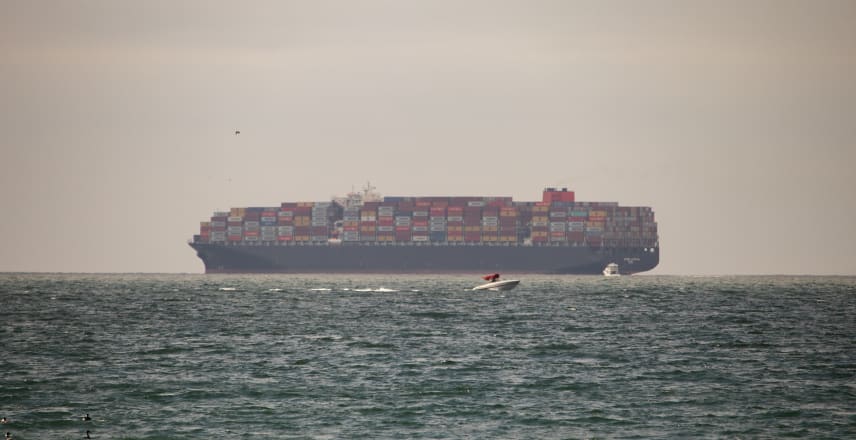
Docker Compose vs Dockerfile
[[2023-04-04-should-a-docker-container-run-as-root-or-user Docker]] is a popular open-source containerization [[2020-04-03-how-to-set-up-the-codeserver-cloud-ide-platform-on-digitalocean-kubernetes platform]] that enables developers to [[2023-11-01-helm-charts-the-package-manager-for-kubernetes package]] [[2023-12-04-can-you-run-gui-applications-in-a-linux-docker-container applications]] into isolated containers for easy [[2023-12-18-understanding-helm-chart-structure-for-easier-deployment deployment]] and [[2023-12-15-release-management-with-tiller-in-helm-version-2 management]]. [[2022-05-08-can-docker-connect-to-database Docker]] [[2023-12-22-convert-docker-compose-to-kubernetes Compose]] and Dockerfile are two of the most important components of the [[2022-06-15-how-do-i-connect-a-docker-bridged-container-to-the-outside-of-the-host Docker]] [[2020-04-03-how-to-set-up-the-codeserver-cloud-ide-platform-on-digitalocean-kubernetes platform]]. [[2021-12-14-how-to-use-local-docker-images-with-minikube Docker]] [[2023-11-17-what-is-docker-compose Compose]] is a tool for defining and [[2023-05-12-running-mysql-server-in-docker-container-and-connecting-to-it-from-host-machine running]] [[2021-12-10-kubernetes-helm-how-to-show-multi-line-properties multi]]-[[2022-07-28-how-to-copy-files-from-host-to-docker-container container]] [[2023-04-04-should-a-docker-container-run-as-root-or-user Docker]] applications, while Dockerfile is a text document that contains all the commands a user could call on the command [[2021-12-10-kubernetes-helm-how-to-show-multi-line-properties line]] to assemble an image. In this article, we will discuss the differences between [[2022-05-08-can-docker-connect-to-database Docker]] Compose and Dockerfile, their [[2023-10-23-argocd-as-a-kubernetes-extension-advantages-and-benefits advantages]] and disadvantages, and how they can be used together.

Docker Exec Bash Example
[[2023-04-04-should-a-docker-container-run-as-root-or-user Docker]] is a powerful tool for [[2023-05-10-building-microservices-with-docker-creating-a-product-service creating]] and [[2023-08-20-managing-multiple-clusters-with-argocd managing]] containers. It allows developers to quickly and easily create, deploy, and manage [[2023-12-04-can-you-run-gui-applications-in-a-linux-docker-container applications]] in a secure and isolated environment. One of the most useful features of [[2022-05-08-can-docker-connect-to-database Docker]] is the ability to execute commands inside a [[2022-06-15-how-do-i-connect-a-docker-bridged-container-to-the-outside-of-the-host container]] using the [[2023-04-04-should-a-docker-container-run-as-root-or-user|docker]] exec command. In this article, we will discuss how to [[2021-12-14-how-to-use-local-docker-images-with-minikube use]] the [[2022-05-08-can-docker-connect-to-database|docker]] exec command to execute a Bash shell inside a [[2022-07-28-how-to-copy-files-from-host-to-docker-container container]].

Managing Multiple Clusters with ArgoCD
Managing Multiple Clusters with ArgoCD

Argo CD : cluster disaster recovery
As organizations continue to adopt [[2020-04-03-how-to-set-up-the-codeserver-cloud-ide-platform-on-digitalocean-kubernetes cloud]]-native technologies and embrace [[2023-05-10-building-microservices-with-docker-creating-a-product-service microservices]] architectures, [[2023-08-20-managing-multiple-clusters-with-argocd managing]] and recovering from cluster disasters becomes increasingly important. In the event of a disaster, you need to quickly and easily recover your cluster without having to manually recreate every component. In this blog post, we’ll explore how Argo CD can simplify the disaster recovery process and ensure that your cluster is up and [[2023-05-12-running-mysql-server-in-docker-container-and-connecting-to-it-from-host-machine running]] as quickly as possible.

Benefits of Using GitOps with ArgoCD
If you’re involved in deploying applications on Kubernetes, you’re probably already familiar [[2023-08-01-benefits-of-using-gitops-with-argocd with]] the challenges and complexities of managing your deployments. In this blog post, we’ll explore some of the benefits of using GitOps with ArgoCD.

Benefits of Using GitOps with ArgoCD
If you’re involved in deploying applications on Kubernetes, you’re probably already familiar [[2023-08-05-benefits-of-using-gitops-with-argocd with]] the challenges and complexities of managing your deployments. In this blog post, we’ll explore some of the benefits of using GitOps with ArgoCD.

Benefits of Using GitOps with ArgoCD
If you’re involved in deploying [[2023-12-04-can-you-run-gui-applications-in-a-linux-docker-container applications]] on [[2020-08-12-play-with-kubernetes-with-minikube Kubernetes]], you’re probably already familiar with the challenges and complexities of [[2023-08-20-managing-multiple-clusters-with-argocd managing]] your deployments. In this blog post, we’ll explore some of the [[2023-10-23-argocd-as-a-kubernetes-extension-advantages-and-benefits benefits]] of using GitOps with [[2023-11-19-continuous-deployment-with-argocd ArgoCD]].
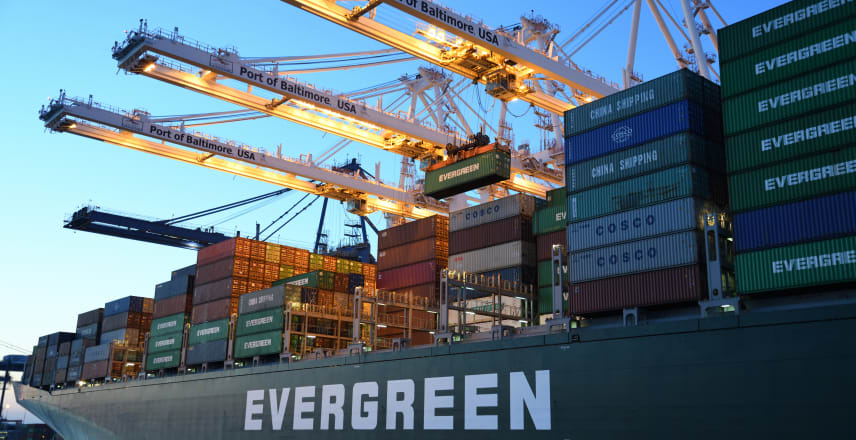
Understanding Container Networking
In the previous video, we learned about [[2023-05-12-running-mysql-server-in-docker-container-and-connecting-to-it-from-host-machine running]] a [[2023-04-04-should-a-docker-container-run-as-root-or-user container]] and [[2021-12-26-how-to-expose-a-port-on-minikube port]] mapping to access it via a web browser or the Curl tool. In this video, we will discuss [[2022-06-15-how-do-i-connect-a-docker-bridged-container-to-the-outside-of-the-host container]] networking, IP addresses, and [[2022-01-11-how-to-fix-cannot-tcp-connect-from-outside-virtual-machine-network-traffic-not-forwarded-to-service-port port]] mappings to avoid conflicts.

Understanding Kubernetes: The Container Orchestrator
If you’ve been hearing a lot about [[2020-08-12-play-with-kubernetes-with-minikube Kubernetes]] lately, you’re not alone. This open source [[2020-04-03-how-to-set-up-the-codeserver-cloud-ide-platform-on-digitalocean-kubernetes platform]] for [[2023-08-20-managing-multiple-clusters-with-argocd managing]] containerized workloads and services has gained widespread popularity, and it’s time to understand why. In this article, we’ll go over the concepts that make [[2020-08-13-work-with-kubernetes-with-minikube Kubernetes]] so powerful, scalable, and useful.

Work-with-kubernetes-with-minikube
Kubernetes can be a suitable technology to use in a home lab environment. Running a Kubernetes cluster in your home lab can be a great way to learn and experiment with container orchestration and microservices architecture.

Should a docker container run as root or user
I. Introduction

Installing kubernetes with minikube
As a software developer, I often work with Kubernetes for managing and deploying my applications. However, setting up a Kubernetes cluster can be a daunting task, especially if you don’t have access to a dedicated infrastructure or cloud platform. That’s why I started exploring Minikube, a tool that allows you to run a local Kubernetes cluster on your laptop or desktop machine. In this guide, I will share the steps that I follow to install Kubernetes and Minikube on a Linux machine. By the end of this guide, you should have a working Kubernetes cluster that you can use for testing and development purposes. Whether you’re new to Kubernetes or an experienced user, I hope you will find this guide helpful in setting up a local Kubernetes environment with Minikube. So let’s get started!

Comment connecter un conteneur Docker à l'extérieur de l'hôte ?
Jetons un coup d’œil au réseau de pont intégré que vous obtenez sur tous les hôtes Docker basés sur Linux. Maintenant, ce réseau est à peu près équivalent au réseau NAT par défaut que vous obtenez avec docker sous Windows.

Comment réparer TCP ne peut pas se connecter depuis l'extérieur de la machine virtuelle, le trafic réseau n'est pas transféré au port de service
La plupart du temps, lorsque vous configurez votre cluster Kubernetes, l’utilisation des paramètres du contrôleur d’entrée par défaut fonctionne. Mais lorsque vous devez faire quelque chose de personnalisé, vous pouvez rencontrer des problèmes. Votre docker sous-jacent et votre moteur kubernetes peuvent vous donner des têtes. Nous allons voir dans cette soluce, comment les réparer et vous redonner le sourire.

Docker peut-il se connecter à la base de données ?
Il existe de nombreuses situations où vous devez connecter une base de données externe car base de données dans un conteneur ne prend pas en charge toutes les fonctionnalités requises par le application ou vous avez besoin de données persistantes dans votre environnement de cluster.

Comment exposer un port sur Minikube
Lorsque vous utilisez minikube, vous devez exposer des ports pour accéder à vos services. Dans docker, vous avez un indicateur de commande pour le faire. Comment faites-vous la même chose dans minikube ?

Comment résoudre Kubernetes can connect with localhost but not ip?
J’ai hébergé un de mes sites web sur kubernetes et j’en suis content… sauf d’une chose : comment y accéder. Mon adresse IP locale est 10.0.0.21. Si j’utilise localhost ou 127.0.0.1, cela fonctionne. Mais si j’utilise mon adresse IP locale, je ne peux pas y accéder.

Installer Kubernetes avec Minikube
Installer Kubernetes avec Minikube

Comment réparer TCP ne peut pas se connecter depuis l'extérieur de la machine virtuelle, le trafic réseau n'est pas transféré au port de service
La plupart du temps, lorsque vous configurez votre cluster Kubernetes, l’utilisation des paramètres du contrôleur d’entrée par défaut fonctionne. Mais lorsque vous devez faire quelque chose de personnalisé, vous pouvez rencontrer des problèmes. Votre docker sous-jacent et votre moteur kubernetes peuvent vous donner des têtes. Nous allons voir dans cette soluce, comment les réparer et vous redonner le sourire.

3 solutions simples pour exécuter minikube dans une VM Ubuntu vm_VT-X/AMD-v
Comment exécuter minikube dans une machine virtuelle Ubuntu vm_VT-X/AMD-v

Comment configurer la plate-forme Cloud IDE du serveur de code sur DigitalOcean Kubernetes
Avec la migration des outils de développement vers le cloud, la création et l’adoption de plates-formes cloud IDE (Integrated Development Environment) se développent. Les IDE cloud permettent une collaboration en temps réel entre les équipes de développeurs pour travailler dans un environnement de développement unifié qui minimise les incompatibilités et améliore la productivité. Accessibles via les navigateurs Web, les IDE cloud sont disponibles à partir de tous les types d’appareils modernes. Un autre avantage d’un IDE cloud est la possibilité d’exploiter la puissance d’un cluster, qui peut largement dépasser la puissance de traitement d’un seul ordinateur de développement.

3 solutions simples pour exécuter minikube dans une VM Ubuntu vm_VT-X/AMD-v
Comment exécuter minikube dans une machine virtuelle Ubuntu vm_VT-X/AMD-v

Travailler avec Kubernetes avec Minikube
Installer Kubernetes avec Minikube

4 étapes faciles pour utiliser des images docker locales avec Minikube
J’ai déjà partagé un court [[2020-08-13-work-with-kubernetes-with-minikube tutoriel sur Minikube]], et pendant que je l’utilisais, j’ai pensé que je réutiliserais mes images locales directement, sans télécharger et puis les télécharger à nouveau.

How do I run a docker container with a specific user
BY default when you run

Propriétés multilignes dans kubernetes Helm avec ConfigMaps
Il existe plusieurs API dans Kubernetes. Un ConfigMap est l’un d’entre eux. C’est un objet qui permet de stocker certaines données non confidentielles. Les données se présentent sous la forme de paires clé-valeur. Certains utilisent des variables d’environnement. Dans cet article de blog, nous verrons comment vous pouvez afficher des lignes à valeurs multiples.

How to copy files from host to Docker container?
In my daily [[2020-08-13-work-with-kubernetes-with-minikube work]], I have utility containers. Some are based on [[2021-12-29-how-to-run-minikube-in-a-virtual-machine-ubuntu-vm_vt-x-amd-v ubuntu]], others just on busy box. I start them, [[2023-04-04-should-a-docker-container-run-as-root-or-user run]] few commands and destroy them.

Comment configurer la plate-forme Cloud IDE du serveur de code sur DigitalOcean Kubernetes
Avec la migration des outils de développement vers le cloud, la création et l’adoption de plates-formes cloud IDE (Integrated Development Environment) se développent. Les IDE cloud permettent une collaboration en temps réel entre les équipes de développeurs pour travailler dans un environnement de développement unifié qui minimise les incompatibilités et améliore la productivité. Accessibles via les navigateurs Web, les IDE cloud sont disponibles à partir de tous les types d’appareils modernes. Un autre avantage d’un IDE cloud est la possibilité d’exploiter la puissance d’un cluster, qui peut largement dépasser la puissance de traitement d’un seul ordinateur de développement.

Travailler avec Kubernetes avec Minikube
Installer Kubernetes avec Minikube

How do I connect a docker bridged container to the outside of the host?
Let’s take a look at the built in bridge [[2022-01-11-how-to-fix-cannot-tcp-connect-from-outside-virtual-machine-network-traffic-not-forwarded-to-service-port network]] that you get on all [[2023-12-04-can-you-run-gui-applications-in-a-linux-docker-container Linux]] based [[2023-04-04-should-a-docker-container-run-as-root-or-user docker]] hosts. Now this networks roughly equivalent to the default NAT [[2022-01-11-how-to-fix-cannot-tcp-connect-from-outside-virtual-machine-network-traffic-not-forwarded-to-service-port network]] that you get with [[2022-05-08-can-docker-connect-to-database docker]] on Windows.

Can Docker connect to database?
There are many situations where you need to [[2022-01-11-how-to-fix-cannot-tcp-connect-from-outside-virtual-machine-network-traffic-not-forwarded-to-service-port connect]] a external database because database in a [[2023-04-04-should-a-docker-container-run-as-root-or-user container]] doesn’t support all the features that is required by the application or you need persistent data across your [[2023-08-16-argo-cd-cluster-disaster-recovery cluster]] environment.

How to solve can connect with localhost but not IP?
I have hosted one of my websites on [[2020-08-12-play-with-kubernetes-with-minikube kubernetes]] and am happy with it … except with one thing: how I can access it. My [[2021-12-14-how-to-use-local-docker-images-with-minikube local]] IP address is 10.0.0.21. If I [[2021-12-14-how-to-use-local-docker-images-with-minikube use]] localhost or 127.0.0.1, it works. But if I [[2023-10-25-using-helm-practical-use-cases use]] my local IP address, I [[2022-01-11-how-to-fix-cannot-tcp-connect-from-outside-virtual-machine-network-traffic-not-forwarded-to-service-port cannot]] access it.

Une solution pour cannot TCP connect from outside Virtual Machine, network traffic not forwarded to Service Port
La plupart du temps, lorsque vous configurez votre cluster Kubernetes, l’utilisation des paramètres du contrôleur d’entrée par défaut fonctionne. Mais lorsque vous devez faire quelque chose de personnalisé, vous pouvez rencontrer des problèmes. Votre docker sous-jacent et votre moteur kubernetes peuvent vous donner des têtes. Nous allons voir dans cette soluce, comment les réparer et vous redonner le sourire.

How to fix cannot TCP connect from outside Virtual Machine, network traffic not forwarded to Service Port
Most of the time when you configure your [[2020-08-12-play-with-kubernetes-with-minikube kubernetes]] [[2023-08-16-argo-cd-cluster-disaster-recovery cluster]], using the default ingress controller settings works. But when you need to do something custom, you may [[2023-04-04-should-a-docker-container-run-as-root-or-user run]] into problems. Your underlying [[2022-05-08-can-docker-connect-to-database docker]] and [[2020-08-13-work-with-kubernetes-with-minikube kubernetes]] engine may give you head eaches. We will see in this walkthrough, how to fix on of these and put a smile back on your face.

3 easy solutions to run minikube in an Ubuntu VM vm_VT-X/AMD-v
How to [[2023-04-04-should-a-docker-container-run-as-root-or-user run]] [[2020-08-12-play-with-kubernetes-with-minikube minikube]] in a [[2022-01-11-how-to-fix-cannot-tcp-connect-from-outside-virtual-machine-network-traffic-not-forwarded-to-service-port Virtual]] [[2022-01-11-how-to-fix-cannot-tcp-connect-from-outside-virtual-machine-network-traffic-not-forwarded-to-service-port Machine]] Ubuntu vm_VT-X/AMD-v

How to expose a port on Minikube
When using [[2020-08-12-play-with-kubernetes-with-minikube minikube]], you need to expose ports to access your services. In [[2023-04-04-should-a-docker-container-run-as-root-or-user docker]], you have a command flag to do that. How do you do the same thing in [[2021-12-29-how-to-run-minikube-in-a-virtual-machine-ubuntu-vm_vt-x-amd-v minikube]]?

4 easy steps to use local docker images with Minikube
I have previously shared a short [[2020-08-13-work-with-kubernetes-with-minikube tutorial on Minikube]], and while I was using it, I thought I would reuse my local images directly, without uploading and then downloading them again.

Multiline Properties in kubernetes Helm with ConfigMaps
There are several APIs in [[2020-08-12-play-with-kubernetes-with-minikube Kubernetes]]. A ConfigMap is one of these. It is an object which helps to storing some non-confidential data. The data is in the form of key-value pairs. Some [[2021-12-14-how-to-use-local-docker-images-with-minikube use]] envrionment variables. In this blog post, we will see how you can show multi-value lines.

How To Set Up the code-server Cloud IDE Platform on DigitalOcean Kubernetes
With developer tools moving to the cloud, creation and adoption of cloud IDE (Integrated Development Environment) platforms is growing. Cloud IDEs allow for real-time collaboration between developer teams to [[2020-08-13-work-with-kubernetes-with-minikube work]] in a unified development environment that minimizes incompatibilities and enhances productivity. Accessible through web browsers, cloud IDEs are available from every type of modern device. Another advantage of a cloud IDE is the possibility to leverage the power of a [[2023-08-16-argo-cd-cluster-disaster-recovery cluster]], which can greatly exceed the processing power of a single development computer.

Travailler avec Kubernetes et Minikube
Installing Kubernetes with Minikube

Work with Kubernetes with Minikube
Installing Kubernetes with Minikube

Play with Kubernetes with Minikube
Installing Kubernetes with Minikube

Installing Kubernetes with Minikube
Installing Kubernetes with Minikube

Play with Kubernetes with Minikube
Installing Kubernetes with Minikube

Installing Kubernetes with Minikube
Installing Kubernetes with Minikube

Playing Kubernetes with Minikube
Installing Kubernetes with Minikube

Playing Kubernetes with Minikube
Installing Kubernetes with Minikube

Comment configurer la plate-forme Cloud IDE du serveur de code sur DigitalOcean Kubernetes
Avec la migration des outils de développement vers le cloud, la création et l’adoption de plates-formes cloud IDE (Integrated Development Environment) se développent. Les IDE cloud permettent une collaboration en temps réel entre les équipes de développeurs pour travailler dans un environnement de développement unifié qui minimise les incompatibilités et améliore la productivité. Accessibles via les navigateurs Web, les IDE cloud sont disponibles à partir de tous les types d’appareils modernes. Un autre avantage d’un IDE cloud est la possibilité d’exploiter la puissance d’un cluster, qui peut largement dépasser la puissance de traitement d’un seul ordinateur de développement.





